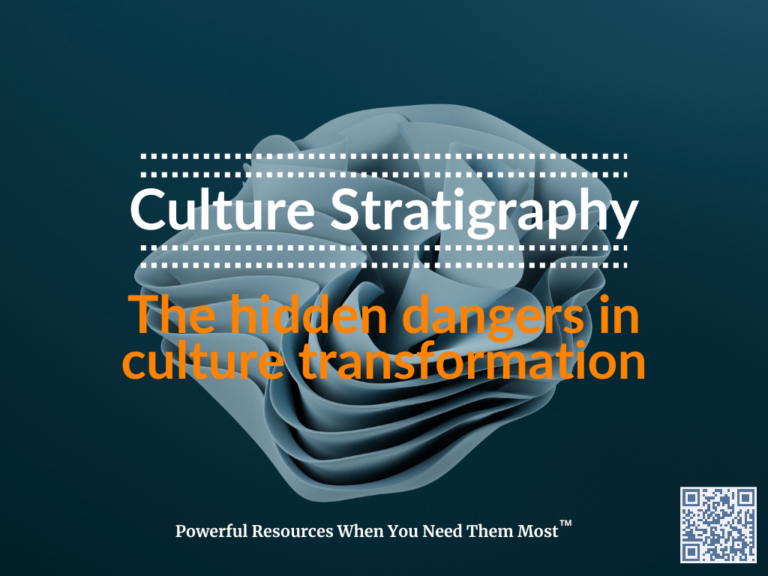The Encounter
If you are currently in the middle of a culture change programme you may have encountered sub-cultures and even hidden cultures in your organisation. You may now be either stuck in molasses or feel like you are in the twilight zone with your mind spinning and wanting to give up.
When archaeologists make a discover they often dig through as many preceding layers of dirt and debris of past societies to get a full history of time to then make assertions about their new discovery and how all of that then informs present civilisation. So for them layers of “culture” are key to understanding human civilisations (organisations). Pompeii is a great example of this “layering” of cultures.
The Cultural World of Edgar Schein
Here’s how Schein defines organizational culture in his book Organizational Culture and Leadership (5th Edition):
The culture of a group can be defined as the accumulated shared learnings of that group as it solves its problems of external adaptation and internal integration; which has worked well enough to be considered valid and, therefore, to be taught to new members as the correct way to perceive, think, feel, and behave in relation to those problems. This accumulated learning is a pattern or system of beliefs, values, and behavioral norms that come to be taken for granted as basic assumptions and eventually drop out of awareness.
One can see the intricacies and complexities or the different layers in this existential definition. Thinking systemically, all these layers and patterns (beliefs, values & norms) not only are co-dependent or symbiotic but in order to change, develop or shape culture each layer or intricacy must be considered.
The danger being that head-first culture change can add more complexity or confusion as the various initiatives, albeit well intentioned, may be at cross purposes.
Stratigraphy
Organisational culture transformation is never easy at the best of times but what makes it even more challenging is the many complex layers (stratigraphy) of organisation culture present at the same time and sharing the same space that are all linked as a single “living” organism. Change in one layer impacts the other. Such a symbiotic challenge needs a clear strategy and a delicate execution plan to make effective change.
Those who think that they are dealing with a single culture need to think again. Culture transformation is very messy but not for obvious reasons. For example, if you have ever encountered resistance or sabotage that was completely unexpected and coming from a surprising cohort in an organisation you will get a vicarial sense of what I am speaking about.
Below is a list of seven key culture layers that you have to navigate to achieve your objectives of transforming your organisation. Each layer has its own unique qualities, character and challenges. However, and this is the difficult part, they are all connected.
7 Layers of Organisation Culture (Where things can get messy)
- Artifact’s: The physical environment, dress codes, symbols, slogans, and logos.
- Espoused values: Stated values, beliefs, and principles, which are often written in mission and vision statements.
- Basic assumptions: The deepest and most hidden layer of organizational culture. It includes the underlying beliefs, assumptions, and attitudes that guide the behaviour of employees and shape the organisation’s identity. Basic assumptions are often unconscious and taken for granted, and they are difficult to change.
- Rituals and ceremonies: The formal and informal activities that reinforce the organisation’s values and beliefs, such as awards ceremonies, regular meetings, and team-building exercises.
- Norms and customs: The unwritten rules and expectations that govern the behaviour of employees in the organisation, such as the dress code, punctuality, and communication style.
- Stories and legends: The narratives and anecdotes that are passed down from generation to generation within the organisation. These stories often reinforce the organisation’s values and beliefs and help to shape its identity.
- Power and politics: The distribution of power and influence within the organization and the ways in which employees navigate the organisation’s hierarchy to achieve their goals. It can include factors such as decision-making processes, leadership styles, and informal power networks.

The Salad Bowl
My advice is not to approach culture change as if you are mixing a salad in a bowl as that will only lead to confusion, disharmony and talent apathy due to an erosion of trust and credibility. You may be seen as a threat to the status quo to those hidden in the “shadows” of your organisation.
It is important to map out every layer in the organisation (both visible and hidden) so you can appreciate how your planned intervention(s) will be impactful and not be eroded or diminished due to resistance and sabotage.
With over 15 years of experience in delivering complex culture change internationally, we can help you navigate the many layers in your organisation, so your time, money and resources are not wasted and your credibility, plans, talent and brand remain intact.

